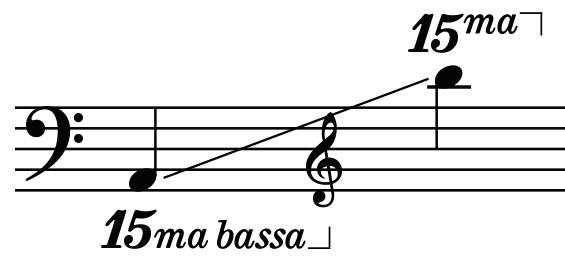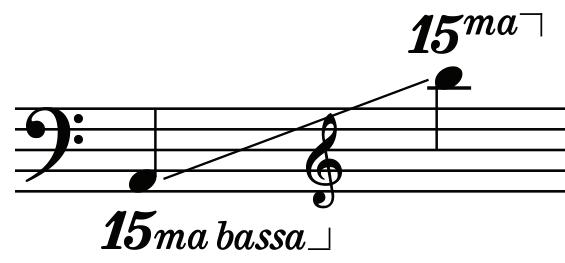PANISELLO
Die Judith von Shimoda
An Opera for 8 Soloists, Chorus, Chamber Orchestra and Electronics
Libretto by Juan Lucas
Adaptation of the original text by Bertolt Brecht
Full Score


Die Judith von Shimoda
An Opera for 8 Soloists, Chorus, Chamber Orchestra and Electronics
Libretto by Juan Lucas
Adaptation of the original text by Bertolt Brecht
Full Score

An Opera for 8 Soloists, Chorus, Chamber Orchestra and Electronics (2020–2023)
Libretto by Juan Lucas
Adaptation of the original text by Bertolt Brecht
POD PETERS on demand
Commissioned by Bregenzer Festspiele and Neue Oper Wien
First performances on 17 & 19 August 2023 at the Bregenzer Festspiele by Amadeus Ensemble Wien & Wiener Kammerchor, conducted by Walter Kobéra
A mi mujer Ema Alexeeva en agradecimiento profundo por su permanente soporte y apoyo
Acknowledgements
Toshio Hosokawa, Heinz-Dieter Reese M.A., Haruna Takebe, Julio Viera, Günter Schweiger, Alexis Baskind Music Production (electronics and live electronics conception), ECIS-CSIPM of UAM (spatialization), Ignacio Monje Barba, Adrián Sánchez Martínez, Adolfo Núñez, Mike Burghall, José Luis Buzón, Stefan Conradi, Ryoko Aoki, Bernhard Jaretz, Karsten Witt Management.
Special thanks to Walter Kobéra & Neue Oper Wien.
Index:
First Part
Prelude pag. 1
Scene I pag. 6
Intermezzo 1 pag. 40
Scene II pag. 43
Intermezzo 2 pag. 67
Scene III pag. 68
Intermezzo 3 pag. 87
Scene IV pag. 89
Intermezzo 4 pag. 112
Scene V pag. 115
Intermezzo 5 pag. 147
Second Part
Scene VI
pag. 153
Intermezzo 6 pag. 164
Scene VII pag. 165
Intermezzo 7 pag. 187
Scene VIII pag. 188
Intermezzo 8 pag. 213
Scene IX pag. 215
Intermezzo 9 pag. 250
Scene X pag. 251
Intermezzo 10 pag. 278
Scene XI pag. 279
Epilogue pag. 296
Post-Epilogue pag. 297
Characters in the interludes:
AKIMURA, Japanese media mogul and politician
CLIVE, English orientalist
RAY, American journalist
KITO, Japanese poet
Characters in the scenes:
OKICHI, geisha
OFUKU, her friend
TSURUMATSU, her fiancé, later husband
OSAI, Tsurumatsu's mistress
Townsend HARRIS, Consul of the USA
Henry HEUSKEN, his interpreter and private secretary
SAITO, police officer
Prince ISA
A street SINGER
Two town councillors
An old teahouse owner
Characters scenified by the CHORUS:
Politicians
A civil servant
Two samurai
Voices of the litter bearers
Crowd, neighbours, passers-by, waiters and waitresses, geishas
VoicePrincipal character
High Soprano OKICHI
Tenor SAITO
Tenor TSURUMATSU (also KITO in the intermezzi)
Soprano OFUKU (also CLIVE in the intermezzi)
Baritone (ossia Tenor) HEUSKEN (also 2. Town councillor and AKIMURA in the intermezzi)
Soprano OSAI (also RAY in the intermezzi)
Baritone HARRIS (also 1. Town councillor)
Bass ISA (also OLD MAN and SINGER)
3 Sopranos
2 Altos
2 Tenors
1 Baritone
2 Basses
•Ord.
•Sprechgesang
•Speaking, acting
•Spoken
•Spoken with tone/quasi spoken
•Susurrato
•Sprechgesang free notes
•Highest pitch



Instrumentation:
Flute (doubling Piccolo and Alto Flute in G*)
Oboe (doubling English Horn)
Bb Clarinet 1 (doubling Bass Clarinet)
Bb Clarinet 2 (doubling Bass Clarinet and Contrabass Clarinet)
Bassoon (doubling Contrabassoon)
Baritone Saxophone (doubling Alto Saxophone and Bass Saxophone)
Horn in F
Bass Trombone
Percussion 1
Percussion 2
Harp
Electric Guitar (doubling Classical Guitar)
Accordion
Keyboard 1
Piano (doubling Keyboard 2)
Violin
Viola
Violoncello
Double Bass (5 strings)
Score in C
Note: Glockenspiel, Piccolo, Xylophone, Double Bass, Contrabass Clarinet, Contrabassoon and Guitars sound as notated with their correspondent octave-transposing clefs.
*) If needed, it is possible to substitute Alto Flute in G by Flute.
Percussion (detail):
Percussion 1
Piccolo Snare Drum
2 Bongos (4 skins)
1 Conga
2 Chinese Toms Bass Drum (low)
2 Cymbals (high, medium)
Tam-tam (low)
Triangle (low)
4 Thai Gongs:
Vibraphone
Xylophone

Steel Drums (double tenor)
Percussion 2
Snare Drum
2 Bongos (4 skins)
3 Toms (3 between 12'-14'-16'-18') Bass Drum (low)
2 Cymbals (medium, low)
4 Bell plates
2-3 timpani:

Glockenspiel (with pedal) Marimbaphone (5 octaves)
Perc. 1 staff notation:



Vibraphone extension:

Xylophone extension: Steel Drums extension:


Perc. 2 staff notation:


Glockenspiel extension: Marimba extension:


Electronics:
The live electronics in Die Judith von Shimoda consists of three different parts:
• Two on-stage master keyboards controlling two identical synthesizers with 16 different programs.
• Pre-recorded two-channel tapes, including some of them with visual and audio clicks.
• Real-time spatialization and timbre processing of the voices in the intermezzi (see below).
These are embedded in a single program (Max patch) which requires both pieces of software Max by Cycling74 (demo version) and Kontakt by Native Instruments (full license, version > 6.7), running on a computer close to the mixing board.
Keyboards
Each keyboard player can train separately before the rehearsals using a simplified setup.
Real-time processing of the voices (intermezzi)
Spatialization:
In contrast to the scenes, where all voices are amplified at the front, the voices in the intermezzi are usually spatialized around the listener (see each part in the score as well as the next section „Spatialization of the voices and real-time processing“ for more details).
Real-time timbre processing:
For some intermezzi, the timbre of the voices is further processed by reverberation, delay/ granulation and distortion (see each part in the score as well as the next section „Spatialization of the voices and real-time processing“ for more details).
(cont.)
Spatialization of the tapes:
All the tapes are two-channel tapes. However, several of them (only for the scenes and the postepilogue, as tapes in prelude, intermezzi und epilogue are played frontally) are intended to be projected onto more than two loudspeakers: the original two-channel material is intended to be routed simultaneously onto several pairs of loudspeakers positioned at different points in the hall (the number, the model and the position of the loudspeakers is a technical and musical decision that has to be taken depending on the hall). During the performance, the computer musician / sound engineer controls the volume of the tapes live in a very dynamic way, in order to create an electronic soundscape on its own, distinct from the orchestra.
Below is a list of all tapes that should be performed in this way:
. „Tape S1_1 War“
. „Tape S1_2 War Resonance“
. „Tape S5_01 Canons1“
. „Tape S5_03 Canons2“
. „Tape S8_1 12 Bells“
. „Tape S9_1 Doppelgänger1 – Fanfare“
. „Tape S9_2 Doppelgänger2 - Explosive“
. „Tape S9_3 Doppelgänger3“
. „Tape S9_4 Doppelgänger4“
. „Tape S9_5“
. „Tape S10_2 Anger“
. „Tape S11_1 inharmonic voice“
. „Tape PostE_1“
Please consult the technical rider and the documentation of the electronics for more information.
The material for live electronics, its documentation as well as the technical rider, will be provided by the publisher.
Specific keyboard commands with notation:








Keyboards - short description for each program:


















Prelude and Intermezzo I
Ray, Clive, Kito, Akimura
For all voices: random spatialization around the listener, the positions change 7 times per second.
Intermezzo II
Ray, Clive, Kito, Akimura
Static spatialization around the listener: Ray: Front left/Kito: Front right/Clive: back left/Akimura: back right
For all voices: granular delay as a cloud around the listener, in the background (the direct voices must remain intelligible). Delay parameters: 1 repetition every 4 seconds, feedback (diminuendo) 40%. Granulation: fast, with fragments of words, syllables and phonemes.
Intermezzo III
bars 1-12 only Clive
Clive’s voice on all speakers around the listener with granulation and reverberation. Granulation: fast, with fragments of words, syllables and phonemes. Reverb: church-like, rather dark and long (RT about 3,5 sec).
bars 13-End all voices
For all voices: random spatialization around the listener, the positions change 7 times per second. Reverb: church-like, rather dark and long (RT about 3,5 sec).
Intermezzo IV
Ray, then Akimura, then Kito (not simultaneously)
For all three voices: spatialization around the listener, the sources rotate slowly and regularly back and forth (position modulated by a triangle LFO, about 9 seconds per cycle). Reverb: church-like, rather dark and long (RT about 3.5 sec).
Intermezzo V
bars 1-42 no effects
Static spatialization around the listener: Ray: Front left/Kito: Front right/Clive: back left/Akimura: back right.
bars 43-End only Akimura
Spatialization around the listener with some divergence (i.e. more than 2 speakers active at the same time). The source rotates slowly and regularly back and forth (position modulated by a sine wave LFO, about 14 seconds per cycle). Reverb: church-like, rather dark and very long (RT about 7 sec).
Intermezzo VI
Clive, Kito, Akimura
All voices: spatialization around the listener with some divergence (i.e. more than 2 speakers active at the same time). The sources rotate slowly and regularly back and forth (position modulated by a sine wave LFO, about 14 seconds per cycle). Reverb: church-like, rather dark and very long (RT about 7 sec). Delay: 1 repetition every 3,17 sec, feedback 35%. The delay should be kept in the background compared to the direct voices.
Intermezzo VII
No effects, sung voice (amplified as for the scenes).
Intermezzo VIII
Akimura
Spatialization around the listener with some divergence (i.e. more than 2 speakers active at the same time). The source rotates slowly and regularly back and forth (position modulated by a sine wave LFO, about 14 seconds per cycle). Reverb: church-like, rather dark and medium-long (RT about 2.5 sec).
Intermezzo IX (same treatement as Intermezzo II) Ray, Clive, Kito, Akimura
Static spatialization around the listener: Ray: Front left/Kito: Front right/Clive: back left/Akimura: back right
For all voices: granular delay as a cloud around the listener, in the background (the direct voices must remain intelligible). Delay parameters: 1 repetition every 4 seconds, feedback (diminuendo) 40%. Granulation: fast, with fragments of words, syllables and phonemes.
Intermezzo X
Ray and Akimura
Ray left, Akimura right
Static spatialization: Ray full left, Akimura full right. Reverb: church-like, rather dark and short (RT about 2 sec). For both voices: slight distortion (overdrive).
Epilogue (same treatment as Intermezzo VIII) Ray
Spatialization around the listener with some divergence (i.e. more than 2 speakers active at the same time). The source rotates slowly and regularly back and forth (position modulated by a sine wave LFO, about 14 seconds per cycle). Reverb: church-like, rather dark and medium-long (RT about 2.5 sec).





















































































































































































For more than 200 years, Edition Peters has been synonymous with excellence in classical music publishing. Established in 1800 with the keyboard works of J. S. Bach, by 1802 the company had acquired Beethoven’s First Symphony. In the years following, an active publishing policy enabled the company to expand its catalogue with new works by composers such as Brahms, Grieg and Liszt, followed in the 20th century by Richard Strauss, Arnold Schoenberg and John Cage.
Today, with its offices in Leipzig, London and New York publishing the work of living composers from around the world, Edition Peters maintains its role as a champion of new music. At the same time, the company’s historic and educational catalogues continue to be developed with awardwinning critical and pedagogical editions.
Seit über 200 Jahren steht die Edition Peters für höchste Qualität im Bereich klassischer Notenausgaben. Gegründet im Jahr 1800, begann der Verlag seine Tätigkeit mit der Herausgabe von Bachs Musik für Tasteninstrumente. Schon 1802 kamen die Rechte an Beethovens erster Sinfonie hinzu. In der Folgezeit wuchs der Katalog um neue Werke von Komponisten wie Brahms, Grieg und Liszt sowie – im 20. Jahrhundert – Richard Strauss, Arnold Schönberg und John Cage.
Als Verleger zahlreicher zeitgenössischer Komponisten aus aller Welt ist die Edition Peters mit ihren Standorten Leipzig, London und New York auch weiterhin Anwalt neuer Musik. Zugleich wird das Verlagsprogramm im klassischen wie im pädagogischen Bereich kontinuierlich durch vielfach preisgekrönte Ausgaben erweitert.